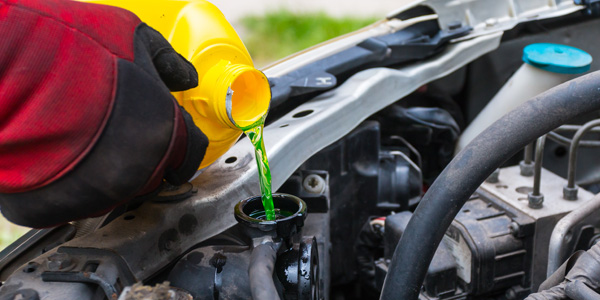
The last thing any motorist wants to see is a temperature warning light on or a temp gauge reading hot with steam billowing out from the hood of their vehicle. Any number of things can make an engine run hot and overheat, but loss of coolant is often the main culprit.
Coolant sealers can be used as both a remedy for many types of small coolant leaks and a preventive that will lessen the chance of leaks forming over time. That’s why many engine builders and installers place a cube of engine sealer inside the cooling jacket of a rebuilt or newly assembled engine. The sealer will dissolve and circulate with the coolant once the engine is returned to service, to reduce the risk of any problems developing later on.
Coolant leaks are always trouble because engines produce a lot of heat. The exploding air/fuel mixture in the cylinders creates tremendous heat and pressure, with combustion temperatures that can approach 4,000 degrees F.
About one-third of the heat generates usable torque and power. Another third is absorbed by the head and block, and the remaining third goes out the exhaust as waste heat. Coolant circulating through the head and block carries heat away from the engine to the radiator so the engine doesn’t overheat. Too much heat (more than 450 degrees F) can soften and warp aluminum and may even cause aluminum or iron castings to crack from the thermal stress. Too much heat also can crush the head gasket between the head and block, causing it to leak.
Any loss of coolant from the cooling system must be prevented because it reduces the cooling system’s ability to manage heat. Even a relatively small leak over time will eventually lead to overheating. Common leaks include small holes or cracks in the radiator or heater core; leaks around the water pump shaft seal; leaking intake manifold gaskets or head gaskets; leaks around the thermostat housing or expansion plugs; hose leaks; and cracks or porosity leaks in the cylinder head or block.
The first thing that has to be done when a leak is causing a loss of coolant is to find the leak so it can be stopped. Radiator, water pump and hose leaks usually are obvious, and often require replacing the leaky component. However, in cases where a leak is relatively minor, a less expensive repair option may be to add coolant sealer to the radiator or coolant reservoir.
Coolant sealers use various technologies to seal different types of leaks. Some contain chemicals that react with air and harden to seal small leaks. Other products also may contain small metallic, ceramic or organic particles that help plug a leak.
“Internal” coolant leaks such as those caused by a bad intake manifold gasket or head gasket, or a hairline crack or porosity leak in the head or block, are more difficult to identify and much more expensive to repair if parts have to be replaced. The same goes for heater core leaks because replacement requires a lot of labor (four to eight hours or more to replace many heater cores).
A coolant sealer that successfully can stop an internal coolant leak can save your customer a ton of money. The key is to choose the right product for the application, and to follow the instructions on the product to the letter.
Coolant sealer also can be recommended as a preventive to customers who are changing antifreeze or replacing a thermostat, water pump, hoses, radiator or intake manifold or head gaskets. If they are investing money and effort to maintain their cooling system or replace a defective part, why not add a bottle of coolant sealer to help prevent any future leaks from occurring? A few fluid ounces of prevention may avert a breakdown and an expensive emergency road service call.











